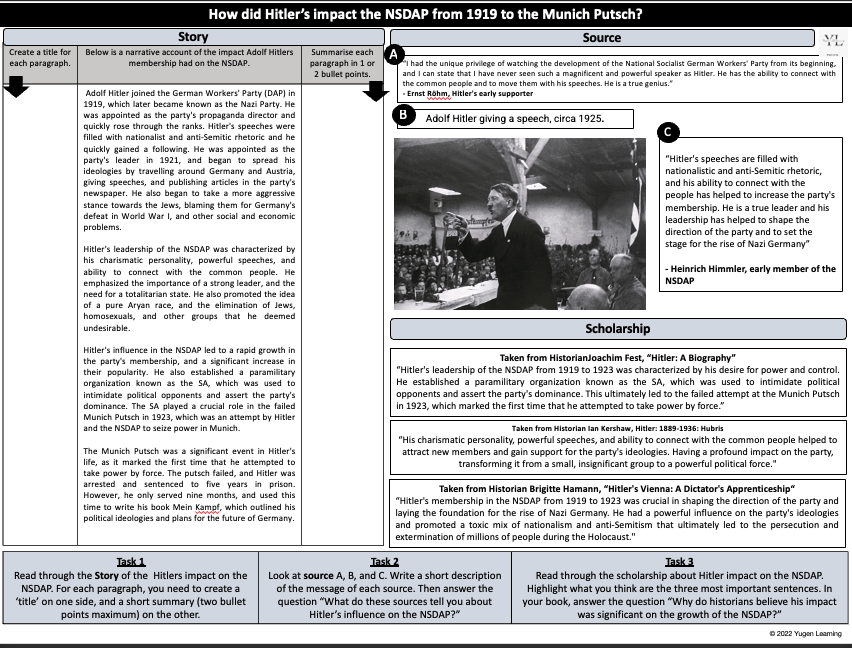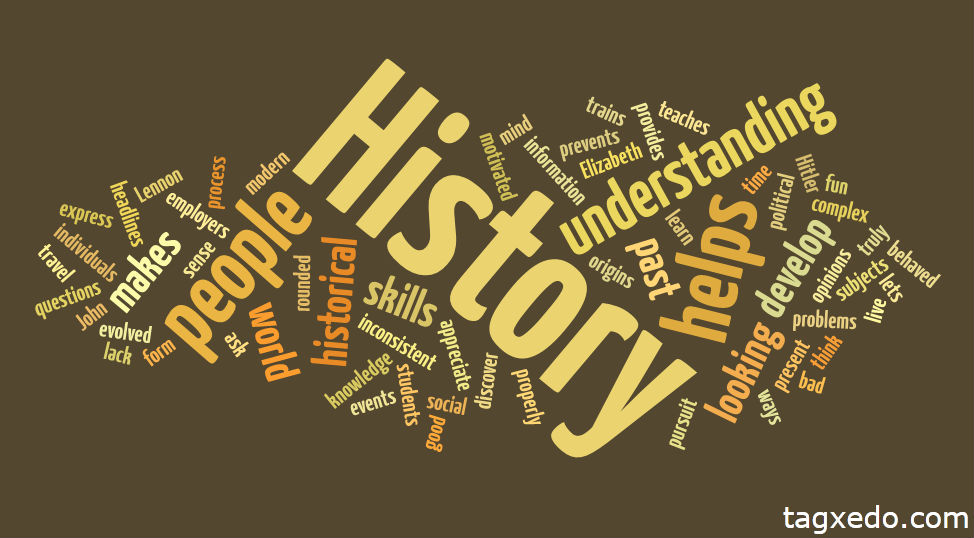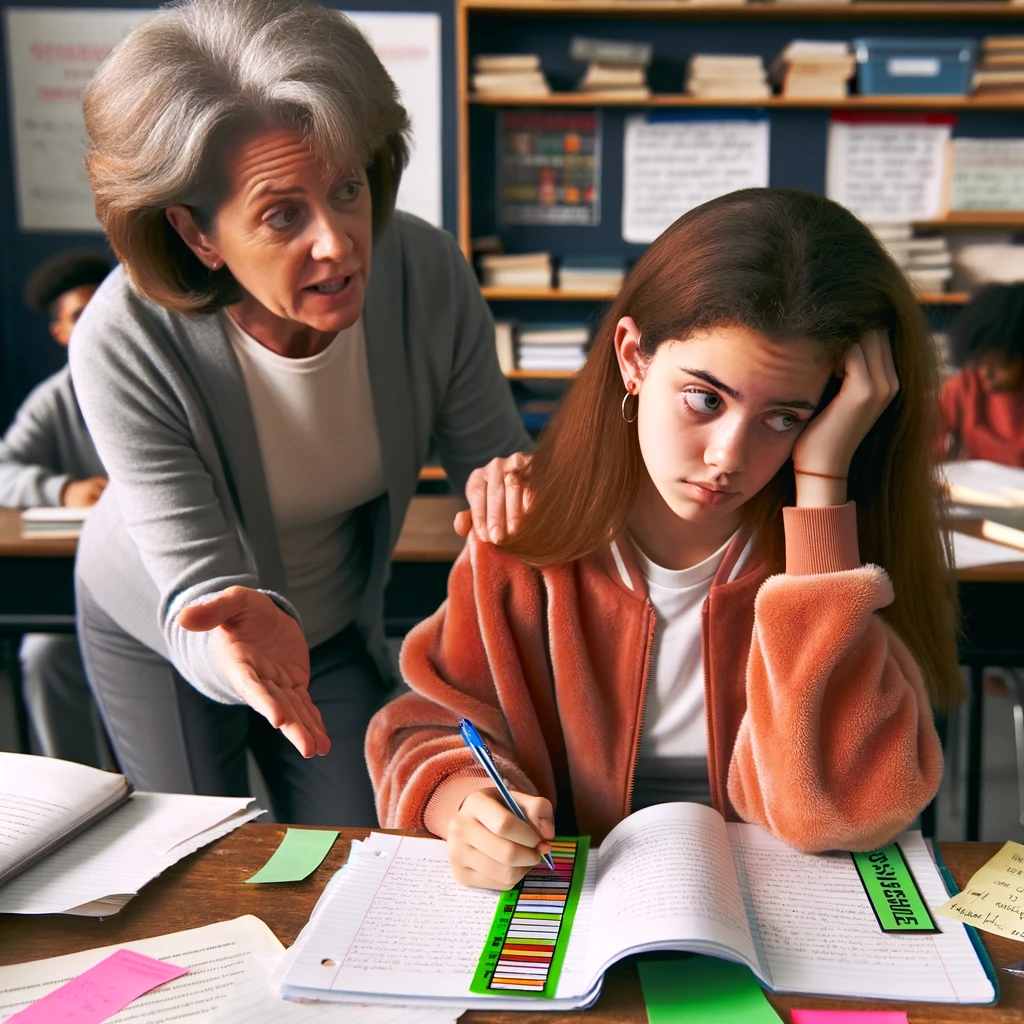
How to teach or help students Document and Source Skills in History
The realm of teaching history has been gifted with numerous innovative approaches, aiming to deepen students’ understanding of historical events and enhance their critical thinking skills. Among these, the Story, Source, and Scholarship (SSS) model stands out as a remarkable strategy for historical education. This model ensures lessons are historically rigorous, engaging, and explorative, strengthening the learners’ comprehension and analysis abilities. You can access a range of these resources on my TPT here.
The Emergence of Story, Source, and Scholarship
In the 2018/19 academic year, educators with a shared vision convened to revamp the Key Stage Three History curriculum. They sought to ensure lessons were more historically accurate and comprehensive. The primary objective was to cultivate in students a strong sense of period grounded in a clear narrative, enabling them to link this contextual knowledge to iconic primary sources of the time.
Another area of concern was fostering an environment where students could engage in key historiographical debates, a component that was notably missing from previous units of work. Thus, the idea of ‘Story, Source, Scholarship’ was born.
This model draws heavily from Simon Beale’s ‘Guided Reading’ activity and James Fitzgibbon’s ‘Source and Scholarship Seasoning’ worksheet. The SSS model begins with a ‘guided reading’ activity that outlines the key events of the time, tasking students to generate simple summaries of the main events, themes, or concepts under study.
The students’ newfound contextual knowledge is then employed to analyze ‘Sources’ and ‘Scholarship.’ This begins with a straightforward task to interpret the message of the sources, progressing towards examining the works of eminent historians related to the enquiry.
The Story, Source, Scholarship Framework
It beauty of the history resource of story, source, scholarship is that it can be broad or as specific as you wish it to be. Allowing you to build up a body of specific tasks for meet every possibility as found here.

Keeping up to date on source history resources
If you wish to keep up to date on the latest releases and get a top selling history resources you can subscribe
The Story, Source, Scholarship Framework for history students
In essence, the SSS model is designed to develop students’ understanding of the discipline of being a historian. This is achieved by engaging them with a clear narrative overview of events (Story), relevant primary sources (Source), and the views of eminent historians (Scholarship).
The pedagogical journey starts with a clear enquiry question. This is followed by providing students an overview of the key events under study – a clear narrative account that serves as a reference point when they engage with the sources and scholarship. Students then embark on a guided reading of the text, creating a title and short bullet point summary for each paragraph.
The newly obtained contextual knowledge from the ‘Story’ is then used to inform an analysis of a range of relevant primary sources. Students initially interpret the main message of each of the sources before considering how these sources assist with their overall enquiry.
Finally, students engage with arguments made by historians regarding the events, pinpointing the most crucial phrase or sentence in each argument. The learning journey concludes with students answering the final enquiry question, utilizing knowledge and evidence from all three components of the resource.
The Impact of Story, Source, Scholarship in the history classroom
The SSS model ensures that students end any historical study with a judgement to make about which historian’s views they agree with, fostering a dynamic engagement with historical perspectives. It brings them closer to the academic rigor that characterizes the field of history and equips them with a comprehensive understanding of historical events.
The model’s beauty lies in its simplicity and effectiveness, making it an invaluable addition to the toolbox of history teachers globally. A testament to this is the range of resources available online, contributed by a generous community of history teachers, who have integrated the model into their teaching practice.
In summary, the Story, Source, and Scholarship model champions the three pillars of historical understanding, making it an effective teaching strategy that can transform the way students perceive and engage with history.
As we continue to redefine educational practices in the 21st century, such innovative strategies will inevitably play a pivotal role in cultivating historically conscious and critically thinking citizens.
Lots of resources available from my TPT store that have improved how my students have succeeded fort he better.
You can access a range of these resources on my TPT here.
Elevate Your History Lessons with Exclusive Insights! 🚀
Embark on a journey through time with us and transform your history lessons into a thrilling adventure for your students! If you’ve found value in our guide to teaching the Norman Conquest, imagine the wealth of resources, tips, and strategies you could explore as a subscriber to our mailing list.
💌 Subscribe to Our Enlightening Educators’ Mailing List Now! 💌
By joining our community, you’ll unlock:
- 🏰 Exclusive lesson plans and teaching resources.
- 🎓 Expert advice and tips on making history engaging and relatable.
- 📘 Early access to our latest guides, eBooks, and educational materials.
- 🎁 Special offers, discounts, and surprises just for our subscriber family.
Let’s create a future where every history lesson is a captivating journey into the past!
👉 SUBSCRIBE NOW 👈 and become a time-traveling educator, crafting lessons that will be remembered for a lifetime!



